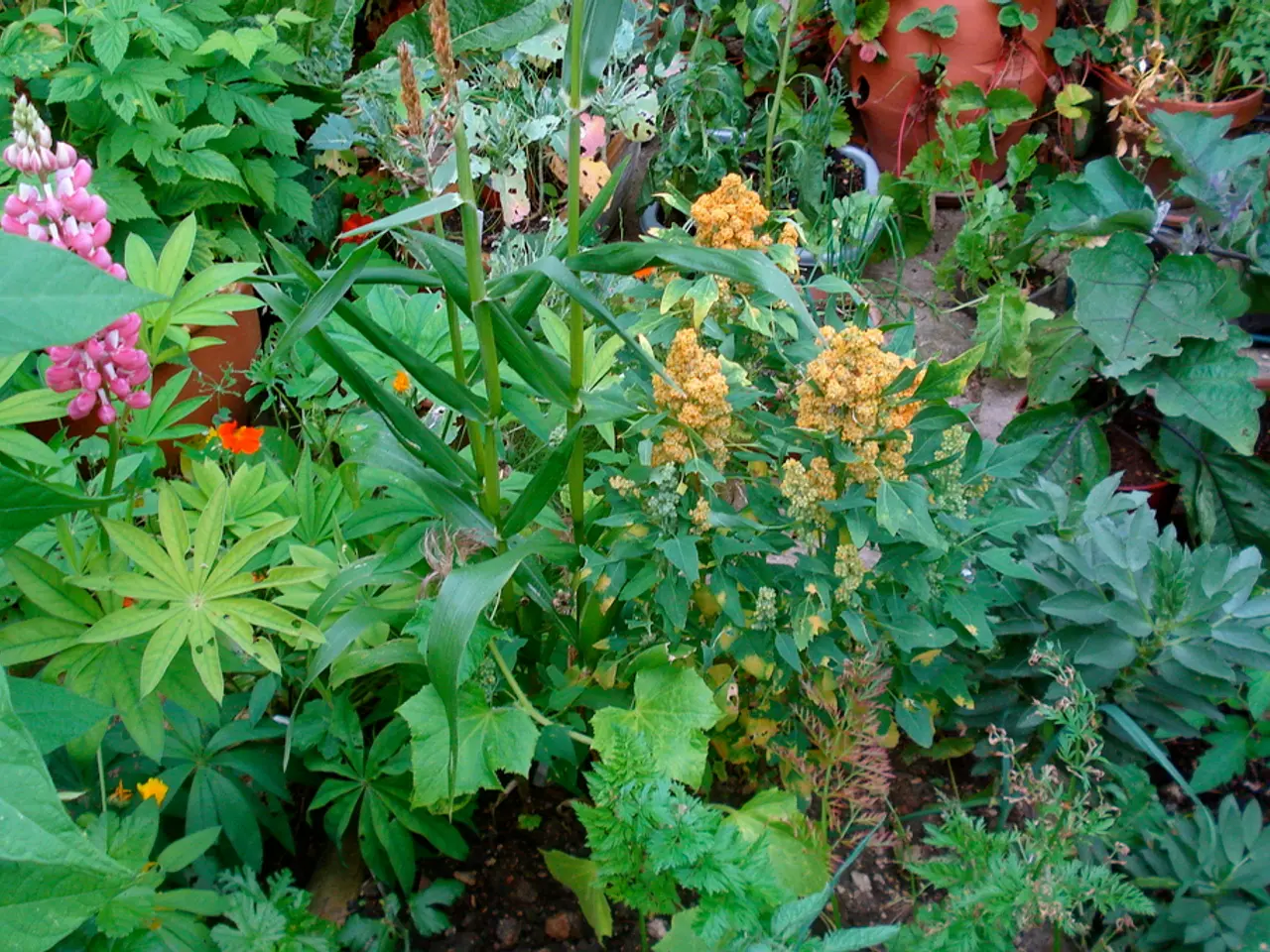A seemingly disorderly garden is actually low-maintenance, provides a thriving habitat for wildlife, and boasts a breathtaking display in the autumn months.
In the picturesque eastern tip of Bavaria, Germany, lies a 10,000 square meter garden that is a testament to the joyful approach to gardening by artist Karin Winkler. This remarkable garden, unfettered by design or planting dogmas, embodies the low-maintenance, nature-inspired ideals of horticulturist Karl Foerster.
The garden, which spans over a decade, is a harmonious blend of native plants and natural growth patterns, eschewing formal landscaping in favour of a wild and organic feel. The soil, stony, moist, and well-drained, supports a diverse array of flora that thrives in the harsh climate, with snowy winters and a sunniest season often found in autumn.
One of the garden's most striking additions to the autumn landscape is Aconitum carmichaelii 'Arendsii', a plant that boasts branched panicles of blue flowers, growing up to 1.5m x 60cm. Anaphalis margaritacea, with its clusters of white flowers lasting from late summer through autumn, and reaching 1m x 1m, is another delightful sight.
Rhus typhina 'Dissecta', a hardy shrub, turns spectacular shades of yellow, orange, and red in autumn, growing to 2.5m x 2.5m. Symphyotrichum 'Ochtendgloren' and Eutrochium maculatum 'Riesenschirm', both hardy giants, thrive in full sun and damp soil, reaching heights of 1.4m x 60cm and 2.5m x 90cm respectively, and produce generous sprays of small pink and white flowers throughout the autumn season.
Karin's garden encompasses an old orchard with various fruit trees, a vegetable garden, and a collection of blueberry bushes. The garden is unrestrained, with variously sized island beds and new borders added each year. It is not fenced, allowing wide borrowed views and access for local deer and rabbits.
Karin, who does all the gardening herself, relying on occasional assistance from a gardener, favours tall perennials such as eupatoriums, white willowherb, Silphium, Cephalaria gigantea, Cicerbita plumieri, and Althaea cannabina, and combines them with stately grasses like molinias, miscanthus, and Stipa gigantea.
Karin's garden is a reflection of her artistic bent and the countryside that inspires her. She never worries about her garden, feels guilt about its maintenance, or suffers from gardener's block. Instead, she relies on her artistic instincts and the natural environment for inspiration.
Despite the internet being awash with results on other artistic and cultural topics unrelated to Karin Winkler or her garden, there are no relevant search results describing her naturalistic garden in Bavaria, Germany or its features. However, based on Karin's work as an artist known for working with natural materials and ecological themes, one might expect a garden like hers to feature use of native plants, emphasis on ecological balance and biodiversity, integration of artistic elements that reflect or interact with the natural environment, and avoidance of intensive cultivation or artificial interventions.
For detailed and accurate features of Karin Winkler's garden, one may need to consult direct sources like Karin Winkler’s official website, gallery or museum publications, or gardening/ecological art exhibitions related to her work.
- Karin Winkler's garden, in Germany's eastern Bavaria, is a 10,000 square meter testament to her joyful approach to gardening, embracing low-maintenance, nature-inspired ideals.
- The garden, unfettered by design or planting dogmas, boasts a wild and organic feel, blending native plants with the natural growth patterns of the harsh surrounding climate.
- One of its autumnal highlights is Aconitum carmichaelii 'Arendsii', a plant with branched panicles of blue flowers, and Rhus typhina 'Dissecta', a hardy shrub that turns spectacular shades of yellow, orange, and red in autumn.
- The garden, which spans over a decade, incorporates elements of horticulture and garden design, with tall perennials like eupatoriums, silphium, and hardy grasses such as molinias and Stipa gigantea.
- To learn more about Karin Winkler's garden and its specific features, one may need to consult her official website, gallery or museum publications, or gardening/ecological art exhibitions related to her work.




